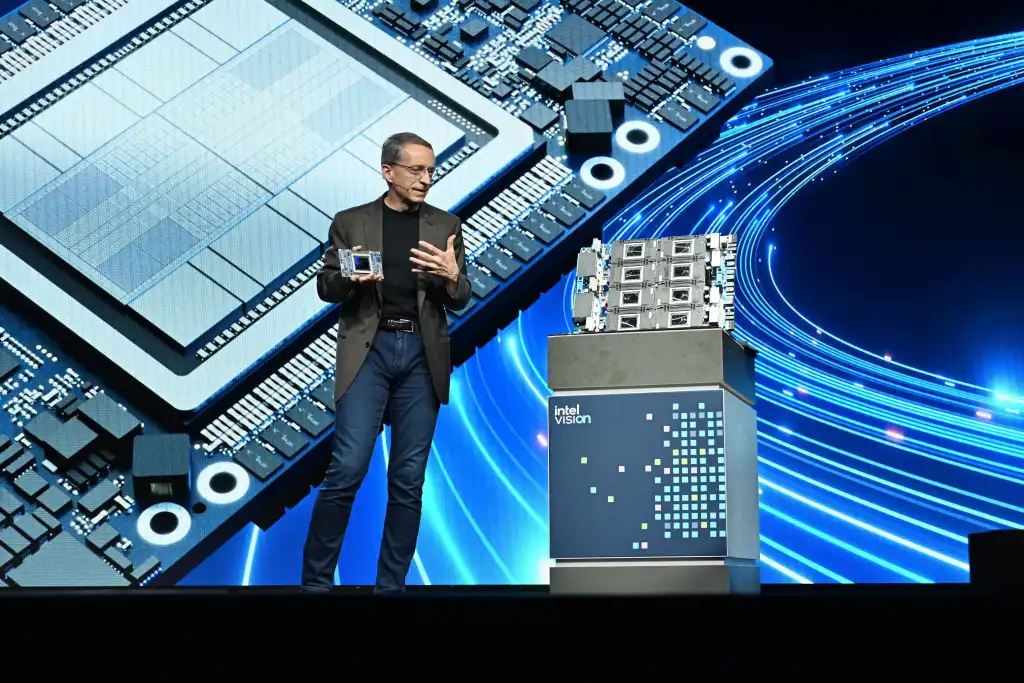Intel recently unveiled its ambitious AI roadmap, outlining plans to develop new chips specifically designed to compete with Nvidia’s dominance in the AI hardware market. This strategic move by Intel highlights the company’s commitment to reclaiming its leadership position in a rapidly evolving technological landscape dominated by AI advancements.
The Current Landscape of AI Hardware
The AI hardware market has been primarily dominated by Nvidia, whose GPUs (Graphics Processing Units) have become the de facto standard for AI and machine learning applications. Nvidia’s CUDA (Compute Unified Device Architecture) platform, combined with its powerful GPUs, has made it the preferred choice for researchers and developers working on AI projects. However, Intel’s latest announcement signals a clear intention to challenge Nvidia’s supremacy by leveraging its own strengths and innovations.
Intel’s Vision for AI
Intel’s AI roadmap is built on a foundation of comprehensive research and development aimed at creating cutting-edge AI chips that can deliver superior performance, efficiency, and scalability. The company’s vision encompasses several key components:
- Innovative Architectures: Intel plans to introduce new chip architectures optimized for AI workloads. These architectures will focus on improving the computational capabilities and efficiency of AI models, enabling faster training and inference times.
- Advanced Manufacturing Processes: Intel is committed to utilizing its advanced semiconductor manufacturing processes to produce AI chips with smaller transistors, higher density, and lower power consumption. This will allow for more powerful and energy-efficient AI solutions.
- Software Ecosystem Integration: Recognizing the importance of software in AI development, Intel aims to provide a robust software ecosystem that integrates seamlessly with its hardware. This includes AI frameworks, libraries, and tools designed to simplify the development and deployment of AI models.
- Collaboration with Industry Partners: Intel plans to collaborate with industry partners, academic institutions, and research organizations to drive innovation and accelerate the adoption of its AI technologies. These collaborations will focus on addressing real-world AI challenges and advancing the state of the art in AI research.
Key Components of Intel’s AI Roadmap
1. Xeon Scalable Processors
At the heart of Intel’s AI strategy are its Xeon Scalable processors. These processors have been the workhorses of data centers and enterprise applications, and Intel is enhancing their AI capabilities to meet the demands of modern AI workloads. The latest generation of Xeon processors features built-in AI accelerators, such as Intel Deep Learning Boost (DL Boost), which provides significant performance improvements for AI inference tasks.
2. Habana Labs Acquisition
Intel’s acquisition of Habana Labs, an AI chipmaker known for its specialized AI processors, plays a crucial role in its AI roadmap. Habana’s Gaudi and Goya AI processors are designed to deliver high performance and efficiency for AI training and inference, respectively. By integrating Habana’s technology into its product portfolio, Intel aims to offer a comprehensive range of AI solutions that cater to different AI use cases and performance requirements.
3. Intel Nervana and Movidius
Intel’s AI roadmap also includes the development of specialized AI chips under the Nervana and Movidius brands. Nervana’s Neural Network Processors (NNPs) are designed to accelerate deep learning training, while Movidius’ Vision Processing Units (VPUs) are optimized for edge AI applications, such as computer vision and real-time processing on devices with limited power and computational resources.
4. OneAPI Initiative
Intel’s OneAPI initiative is a critical component of its AI strategy, aiming to provide a unified programming model that simplifies the development of AI applications across different hardware architectures. OneAPI includes a set of libraries and tools that enable developers to write code once and deploy it on various Intel hardware platforms, including CPUs, GPUs, FPGAs (Field Programmable Gate Arrays), and AI accelerators.
5. Partnerships and Ecosystem
Intel recognizes that fostering a strong ecosystem is essential for the success of its AI roadmap. To this end, the company is partnering with leading AI researchers, software developers, and industry stakeholders to drive innovation and ensure the compatibility and optimization of AI software with Intel’s hardware. These collaborations aim to create a vibrant AI ecosystem that supports a wide range of AI applications, from data center deployments to edge computing.
Challenges and Opportunities
While Intel’s AI roadmap presents a promising vision for the future, it also faces several challenges. Competing with Nvidia’s established dominance in the AI hardware market will require significant investment in research and development, as well as strategic partnerships to gain market traction. Additionally, Intel must address the evolving needs of AI developers and ensure that its hardware and software solutions are user-friendly and capable of delivering tangible performance benefits.
On the other hand, Intel’s extensive experience in semiconductor manufacturing and its broad product portfolio provides a strong foundation for success. The company’s ability to leverage its existing infrastructure and expertise in chip design and fabrication can give it a competitive edge in developing high-performance AI solutions. Furthermore, the growing demand for AI across various industries presents a substantial market opportunity for Intel to capitalize on with its innovative AI technologies.
Conclusion
Intel’s unveiling of its AI roadmap marks a significant milestone in the company’s efforts to reclaim its leadership position in the technology sector. By focusing on innovative architectures, advanced manufacturing processes, and a robust software ecosystem, Intel aims to deliver AI chips that rival Nvidia’s offerings in performance, efficiency, and scalability. The integration of Habana Labs’ technology, the development of specialized AI chips, and the OneAPI initiative all play crucial roles in Intel’s strategy to create a comprehensive AI ecosystem.
As Intel embarks on this ambitious journey, it faces both challenges and opportunities. The competition with Nvidia is formidable, but Intel’s extensive experience and technological prowess position it well to make significant strides in the AI hardware market. The coming years will be critical as Intel executes its AI roadmap and strives to become a key player in the AI revolution.


